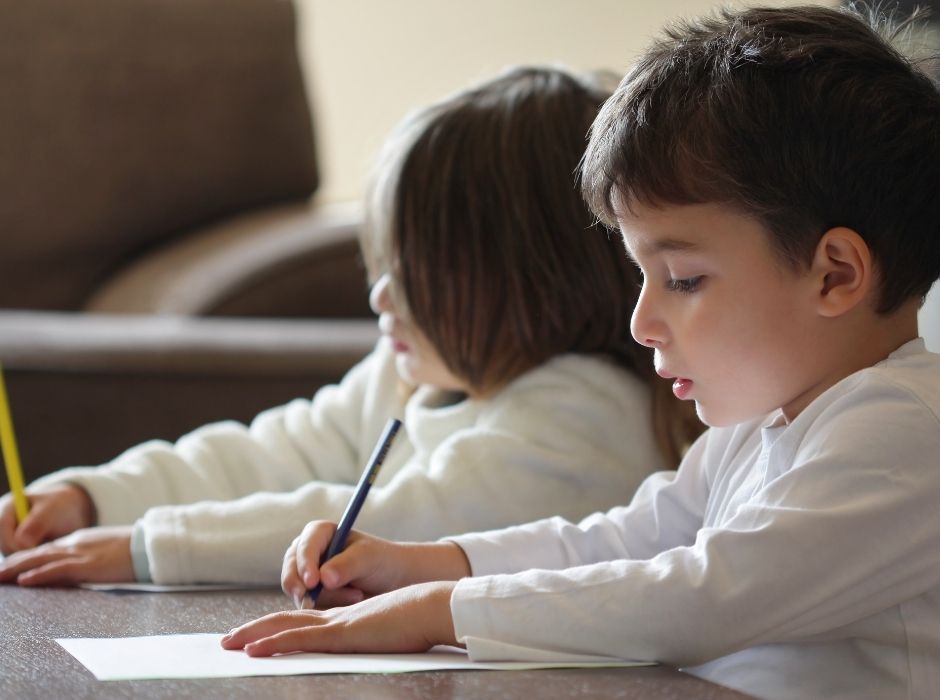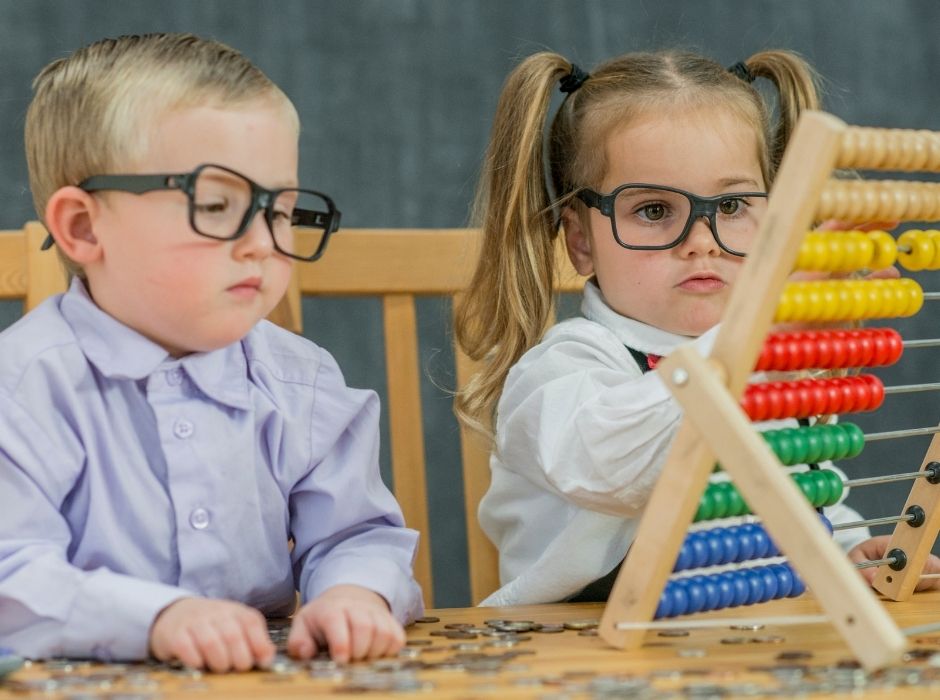Non solo lettere e numeri, ecco le abilità da allenare prima dell’ingresso tra i banchi della scuola primaria, per bambini pronti e confidenti!
Molti genitori pensano che lettura, scrittura e calcolo si imparino con l’ingresso nella scuola primaria. In realtà è un mito da sfatare.
I bambini iniziano a sviluppare prerequisiti fondamentali per il futuro apprendimento già molto prima. Vediamo insieme quali sono e come fare ad allenarli anche a casa.

La capacità dei bambini di manipolare i suoni del linguaggio parlato si sviluppa a partire dai 5 anni circa. Sono le cosiddette abilità metafonologiche, ovvero il riconoscimento delle rime, delle sillabe (per esempio: me -la, pe-ra) e la classificazione di parole in base alla lunghezza.
Provate a “giocare con le parole” con i vostri bambini. Ad esempio potete dire loro una parola “a pezzetti” e chiedere di indovinarla (mo-to: che parola è?) oppure trovare insieme le parole che fanno rima o tutte quelle che iniziano con una determinata sillaba ( “pa” come pane, palla, patata…).
I bambini a questa età dovrebbero pronunciare correttamente tutti i suoni del linguaggio, avere un vocabolario ampio e una adeguata capacità di comprendere e formulare frasi, ripetere filastrocche e raccontare storie.
Il modo migliore per potenziare queste competenze è leggere insieme libri illustrati, commentare le scenette, fare osservazioni e rispondere alle curiosità. Anche una giornata fuori casa può diventare un’occasione per imparare tante nuove parole!

Per scrivere bene è necessario non solo che i bambini sappiano impugnare correttamente penna e matita ma anche ripassare forme e disegni tratteggiati, utilizzare le forbici, costruire puzzle con facilità e costruzioni complesse con mattoncini, oltre che copiare una figura geometrica in modo riconoscibile.
Non meno importante è la capacità dei bambini di occupare correttamente lo spazio del foglio leggendo e/o scrivendo da sinistra verso destra, di riconoscere i rapporti spaziali (sopra, sotto, dentro, fuori) e di percepire le differenze tra due immagini.
Il gioco è il miglior alleato per poter sviluppare le abilità visuo-motorie e visuo-spaziali. C’è tanto materiale in commercio ma a volte basta solo usare la fantasia.
Stampate, colorate, ritagliate insieme dei disegni e costruite torri e fortezze alte fino al cielo! Potete coinvolgere i piccoli nei lavoretti domestici, ad esempio mettendo gli oggetti dentro e fuori dai contenitori. Sarà anche una buona occasione per mettere a posto i giocattoli nella stanzetta!

Un bambino pronto per la scuola primaria deve conoscere i numeri da 0 a 10 e saper far corrispondere la “parola-numero” (uno) sia al segno grafico (1) che alla quantità dell’insieme che sta contando.
Le abilità logico-matematiche si sviluppano già da piccolissimi. I bambini imparano presto a riconoscere tra due gruppi quello che contiene il maggior numero di elementi e a saper stimare “ad occhio” la numerosità di un insieme di oggetti.
Per un bambino il modo migliore di imparare è attraverso il gioco. In Smart Tales i racconti insegnano l’empatia e la socialità e i giochi sono una palestra per allenare concentrazione, ragionamento e problem solving. Tuo figlio sarà pronto per la scuola e non solo, sarà più sicuro, confidente e felice.
Vuoi scoprire se tuo figlio è pronto per la scuola? Fai il test